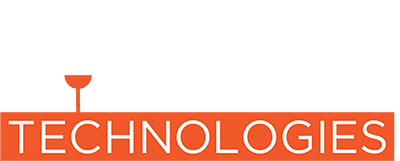Back of the Napkin Tech Road Mapping
I managed a new product development / R&D group for a few years. We were responsible for full product life cycle – from concept, development, through launch, manufacturing support, and obsolescence. The cradle to grave mentality created a great sense of accountability. It eliminated the classic development mind-set of "fix it in production" or "purchasing can deal with that single sourcing risk later." The regime also meant that as engineering managers, we constantly needed a short-term and long-term technology road map in order to make sure that the ship kept sailing in the right direction without running aground along the way.
Hardcore road mapping sessions with the whole team was an incredibly useful annual event, sometimes offsite, with a creative moderator. Also useful, and more frequently achievable, were the back of a napkin sessions – where senior team members and / or a couple key contributors would do a fast deep dive into a problem over lunch, and then follow up on action items before they got back together to discuss progress. As I go from foundry to foundry promoting new technology, I see an industry at large which would benefit from routine technology road mapping, even on the back of the napkin. My ultralight version of the process and a few examples are below.
I break road mapping down into two timeframes: Current and future. There's a lot of time wasted on 'how far out into the future you’re talking about,' but it's your business, so I figure you already know the answer.
Current state: Dealing with reactionary / course corrections (what are your pain points?)
Future state: What is the achievable target that you are aiming for?
The road map from one state to the other outlines the projects that you need to undertake.
EXAMPLES
A foundry was facing increasing pressure from a pernicious environmental and safety inspector. The foundry owner had no desire to move the business, but needed to address some potential future problems from the community as well. (see figure 1.)

Figure 1.
Studying the problems, the foundry decided to invest in converting from silica to a ceramic sand. The ceramic enabled lower resin content. Identifying new "green" resin chemistry, opportunities for further air pollution reduction, and some modern acoustic engineering to reduce grinding room noise are some other solutions that they can implement over time. Each of these investments will eliminate distractions and potential regulatory issues – and probably make the foundry a better place to work.
As a final example: a foundry had a steady traditional business, but was losing new jobs to other foundries due to the cost and lead time associated with tooling. They wanted to get better at quick turn parts to serve more of their local pump, mining, and heavy equipment customers. (see figure 2.)

Figure 2.
These investigations lead them into research on 3D Printing, 3D Scanning, Reverse Engineering, Sand Milling, and other quick turnsolutions. In order to better understand what systems to buy, when, and what the interdependencies are, the leadership needed to sit down and lay out the options. Mapping this out on a couple of napkins can work out just fine. (see figure 3.)

Figure 3.
As a result of the analysis, it became clear that having one or more new hires that were capable of learning and using the new technology was a high priority. From there, it was a toss-up for which technology to add, and in what order. Everything seemed useful.
(The author advises the following order of adoption: CAD, 3D simulation of mold filling/solidification modeling, 3D Scanning, and then getting the 3D Printing/Sand Milling process that fits your parts & production volumes.)
Carefully researching the details behind your current issues is tedious, but it pays off with good data for making the highest ROI investments. For many GMs / Business owners, the critical data is being reviewed regularly, and the back of a napkin may be all you need to organize your path forward.
Until next time...

